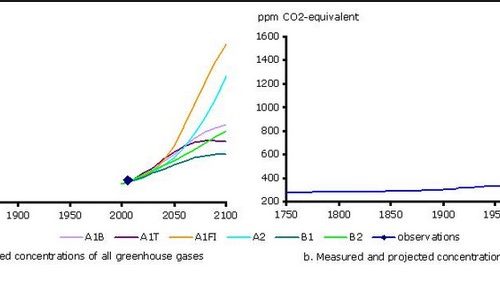
Non-climatic influences – inhomogeneities – can and do affect climatic observations. Any analyst using instrumental climate data must first assess the quality of the observations. A numerical series representing the variations of a climatological element is called homogeneous if the variations are caused only by fluctuations in weather and climate (Conrad & Pollak, 1962). Leaving aside the misrecording of data, the most important causes of inhomogeneity are:
1) changes in instrument, exposure and measuring technique (for example, when more technologically advanced equipment is introduced);
2) changes in station location (i.e. when equipment is moved to a new site);
3) changes in observation times and methods used to calculate daily averages; and
4) changes in the station environment, particularly urbanisation (for example, the growth of a city around a pre-existing meteorological station).
When assessing the homogeneity of a climate record, there are three major sources of information: the variations evident in the record itself; the station history; and nearby station data. Visual examination and statistical analysis of the station record may reveal evidence of systematic changes or unusual behaviour which suggest inhomogeneity. For example, there may be a step-change in the mean, indicating a change in station location. A steady trend may indicate a progressive change in the station environment, such as urbanisation. An extreme value may be due to a typing error.
Often these inhomogeneities may be difficult to detect and other evidence is needed to confirm their presence. One source of evidence is the station history, referred to as metadata. The station history should include details of any changes of location of the station, changes in instrumentation or changes in the timing and nature of observation. Very often, though, actual correction factors to observation data containing known inhomogeneities will be difficult to calculate, and in these cases, the record may have to be rejected.
The third approach to homogenisation involves empirical comparisons between stations close to each other. Over time scales of interest in climate change studies, nearby stations (i.e. within 10km of each other) should be subject to similar changes in monthly, seasonal and annual climate. The only differences should be random. Any sign of systematic behaviour in the differences (e.g. a trend or step-change) would suggest the presence of inhomogeneities.
In light of the foregoing discussion on homogeneity, careful attention has to be paid to eliminating sources of non-climatic error when constructing large-scale record, such as the global surface air temperature time series (Jones, 1988 & Farmer et al., 1989). This, and similar records including sea surface temperatures, rely on the collection of millions of individual observations from a huge network made up of thousands of climate stations. A number of these have been reviewed by Jones et al., (1991). The effects of urbanisation (the artificial warming associated with the growth of towns and cities around monitoring sites) were considered to be the greatest source of inhomogeneity, but even this, it was concluded, accounts for at most a 0.05C warming (or 10% of the observed warming) over the last 100 years.
Conrad & Pollak (1962), Folland et al. (1990), and Jones et al. (1991) provide useful references investigating the problems of homogeneity and data reliability of instrumental records of climate data.




Leave a Reply